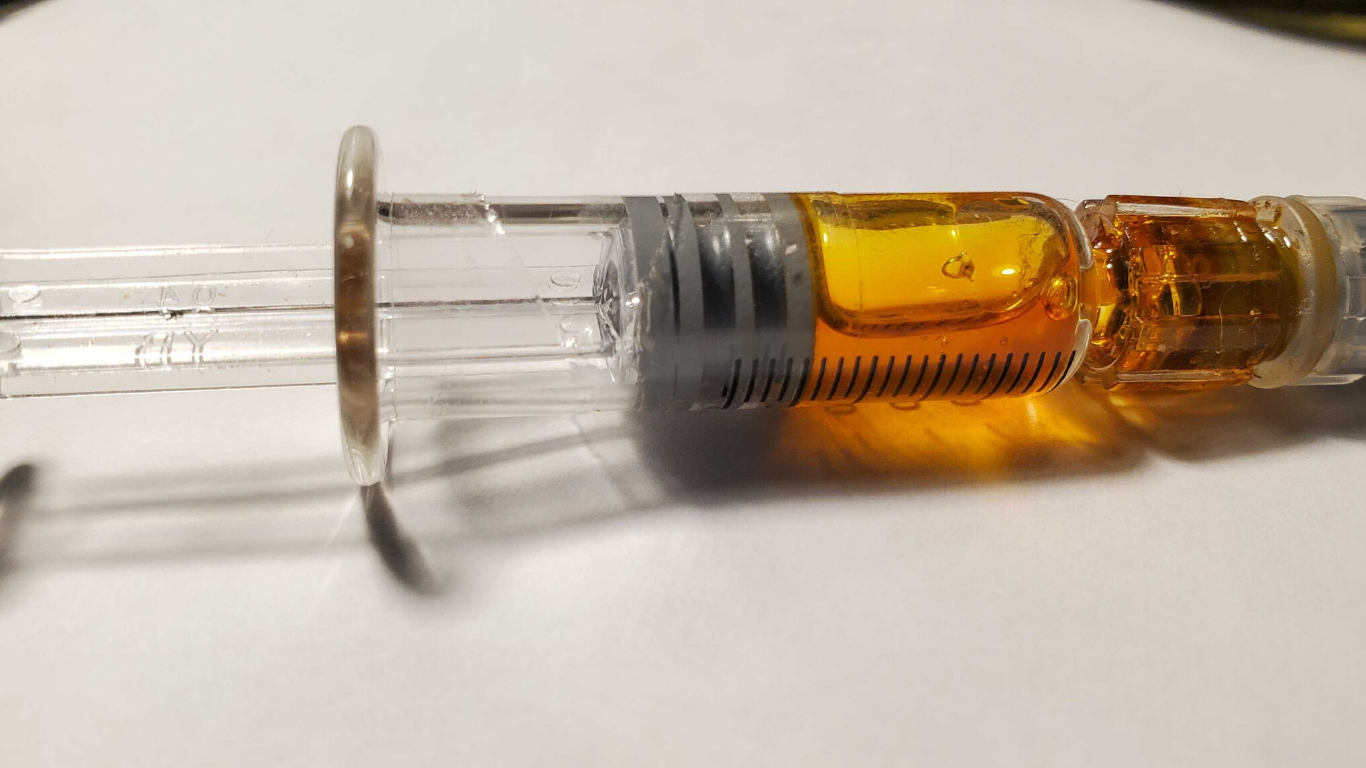
Researchers at Portland State University in Oregon have recently identified pine resin in a sample of cannabis extract adulterant.
Although there have been reports online and speculation in the industry of pine rosin being used in cannabis extracts, this is the first report of pine resin (rosin, etc.) being used as ingredients for cannabis vaping devices.
The research paper also speculates that these products, found in other fluidizing agents that are used to ensure better wicking efficiency in the atomizer of a vape pen, could be a culprit in recent reports of lung injuries associated with cannabis vape pens and other cannabis extracts.
Dr Robert Strongin, one of the two researchers behind the paper, says he was tipped off to the product by a contact in the cannabis industry in the US who came across the product and wanted to know what was in it.
After running tests on the product to determine the ingredients, and then cross-referencing those findings after also analyzing samples of pine resin they ordered online, they confirmed the sample they were given contained pine resin, as well as vitamin E acetate and a product called oleamide, commonly found in synthetic marijuana products like Spice or K2.
The product is sold as a cutting agent for vape pens.
“We did the analysis and found that it had abietic acid, which is the main ingredient in pine resin, and then we bought a sample of pine resin from amazon and everything matched, spectroscopically,” Dr. Strongin told Stratcann via a telephone interview.
“It also had a hypnotic agent (oleamide) that was present in spice, the fake marijuana that is sometimes sold on the street. It had that and the medium chain triglyceride. Plus all of the ingredients match perfectly for pine resin.”
He says they published the research in hopes that others who have been looking at lung health issues connected to vape pens will now have these products on their radar, too. He also wants the general public to be aware of the dangers of inhaling this product.
“We don’t know exactly how agencies like the CDC do their analysis,” says Dr Strongin. “But we’re pretty sure that their methods wouldn’t detect this stuff, because they wouldn’t be looking for it. So the two reasons we published this were to warn people, to make regular users and the general public aware, and also to put it on regulators’ and law enforcement’s radar, too.”
He says that after they discovered and confirmed the presence of pine resin in the product they sampled, they began searching online to see if this was something any other researchers had identified. Although they didn’t find much official research, he says they found several social media posts, especially on reddit, of consumers saying they had used products that they suspected were pine resin or cut with pine resin, including users buying black market shatter in Canada.
“Hopefully it’s not around much, but we were afraid because now that all this has come out about vitamin E acetate and lung disease, we were worried that this might be something new that people were trying to replace vitamin E acetate. That was a concern of ours which is why we tried to publish this info very rapidly.”
“Now it’s up to others to look into this, that’s why we put the info out there, and now we’ll keep our eyes out for anything new that crosses our way just like this did.”
Other research has recently pointed to other adulterants, like vitamin E acetate, as being connected to an increase in lung injuries associated with the use of cannabis extracts and especially black market cannabis vape pens. This is the first research to look at the use of pine rosin as another possible culprit in these issues of lung injury (called EVALI, or e-cigarette or vaping product use associated lung injury). The additive tested was acquired from products currently being used in the industry in the US.
CEs (Cannabis Extracts) added to CV (Cannabis Vaping) devices often require fluidizing agents to ensure better wicking efficiency in the atomizer of a vape pen, given the high viscosity of cannabis extracts. Substances such as terpenes, medium chain triglyceride (MCT) oil, and phytol, among others are commonly used. One CE additive to CV devices, vitamin E acetate (VEA), has been linked with the recent outbreak of e-cigarette, or vaping, product use associated lung injury (EVALI). It’s use as a thickening agent has been suggested, however, the markedly lower viscosity of VEA relative to 9 -tetrahydrocannabinol (THC), indicates that the former is used to dilute CEs, and that a different additive is the thickening agent, which is introduced to give the appearance of unadulterated CE. Herein is the first report of an adulterant containing pine rosin (a.k.a. rosin colophony or pine resin) for cannabis CV devices. The adulterant was acquired from a formulations consultant that works in the cannabis vaporizer formulations space, which itself acquired the adulterant from cannabis CV device manufacturer.
Testing two different adulterants used for creating the right viscosity for cannabis oil in vape pens, researchers identified one as pure vitamin E acetate (VEA), while the second contained numerous compounds pointing to the presence pine resin, as well as glycolic methylene and abietane and pimarane molecules and oleamide (pine rosin (68 %), MCT oil (15 %), and small amounts of oleamide). In one sample, a commercially available MCT oil (Nature’s Way) was found to contain these cannabis extract adulterants.
Although in the past, it has been speculated that vitamin E acetate (VEA) is used as a thickening agent for cannabis oil, the paper here points out that VEA is actually less viscous than cannabis oil, and that it is likely used as a cutting agent for cannabis oil, while other products such as pine resin are used to thicken the entire product to make it not look too thin under consumer analysis.
With many known health and lung problems associated with the inhalation of the volatile compounds released when heating pine resin, the researchers say they hope this research will help better inform the discussion around lung injuries associated with cannabis vape pens, and better guide labs to more effectively identify the presence of these products in cannabis vape pens.












